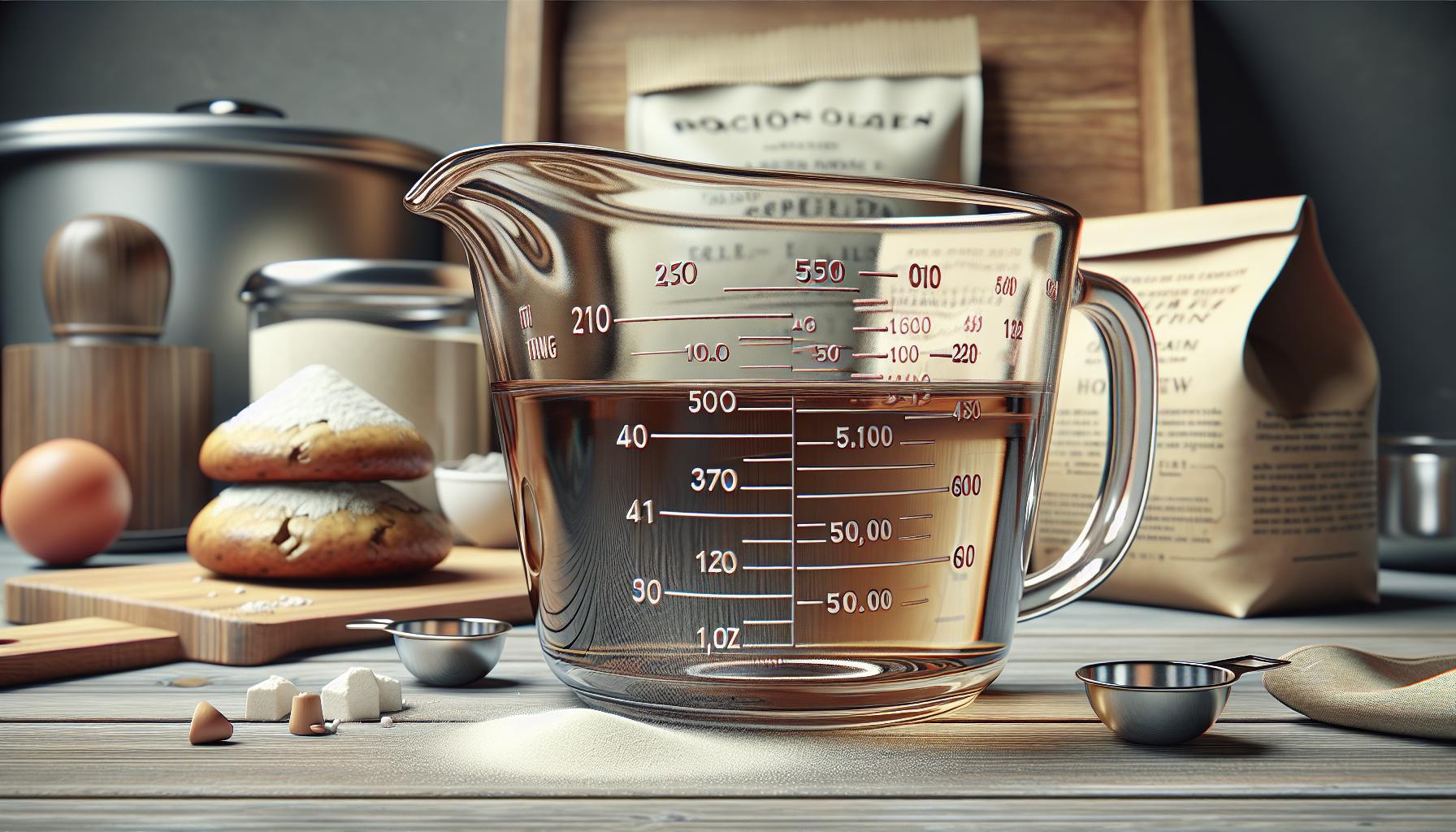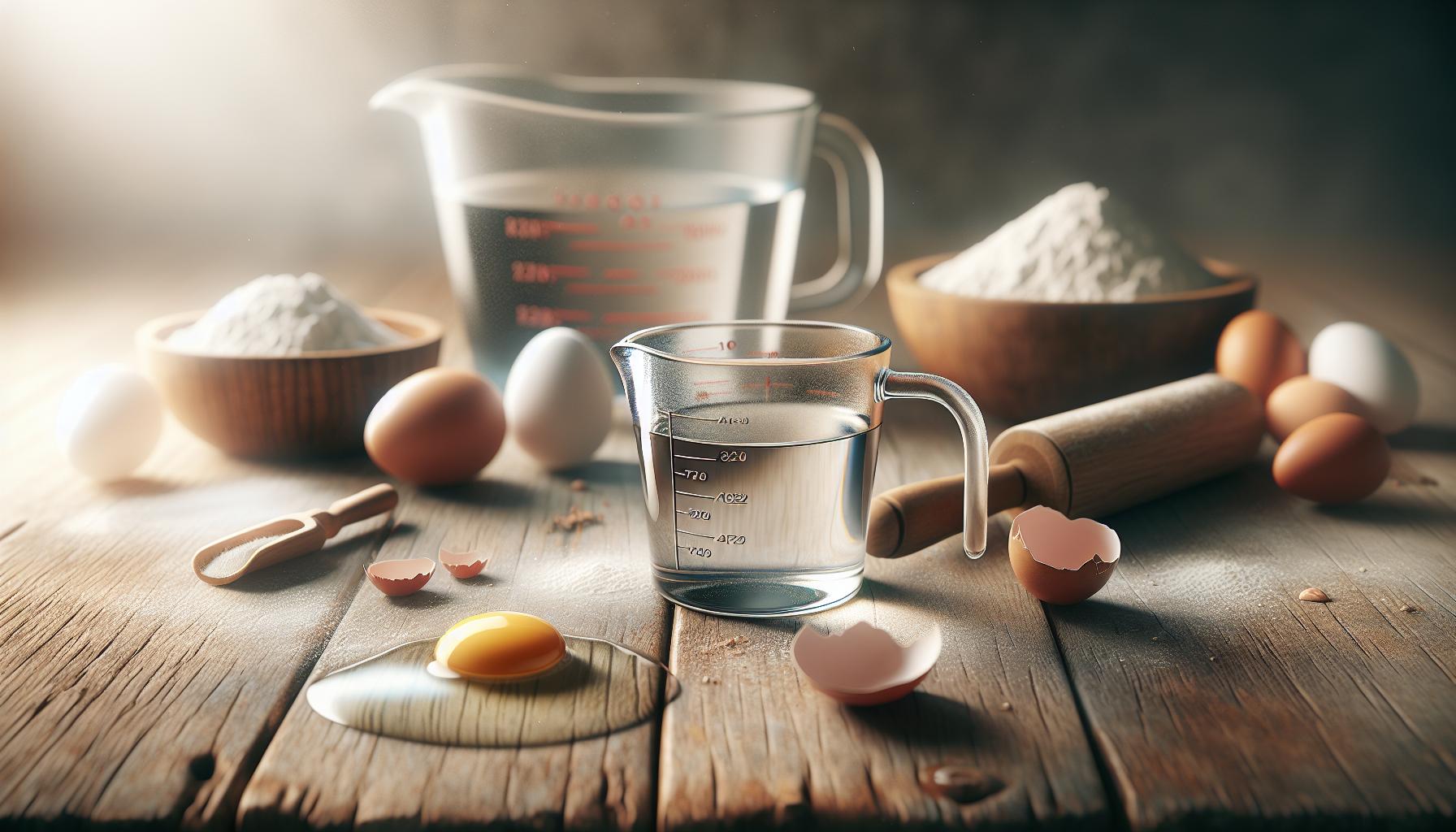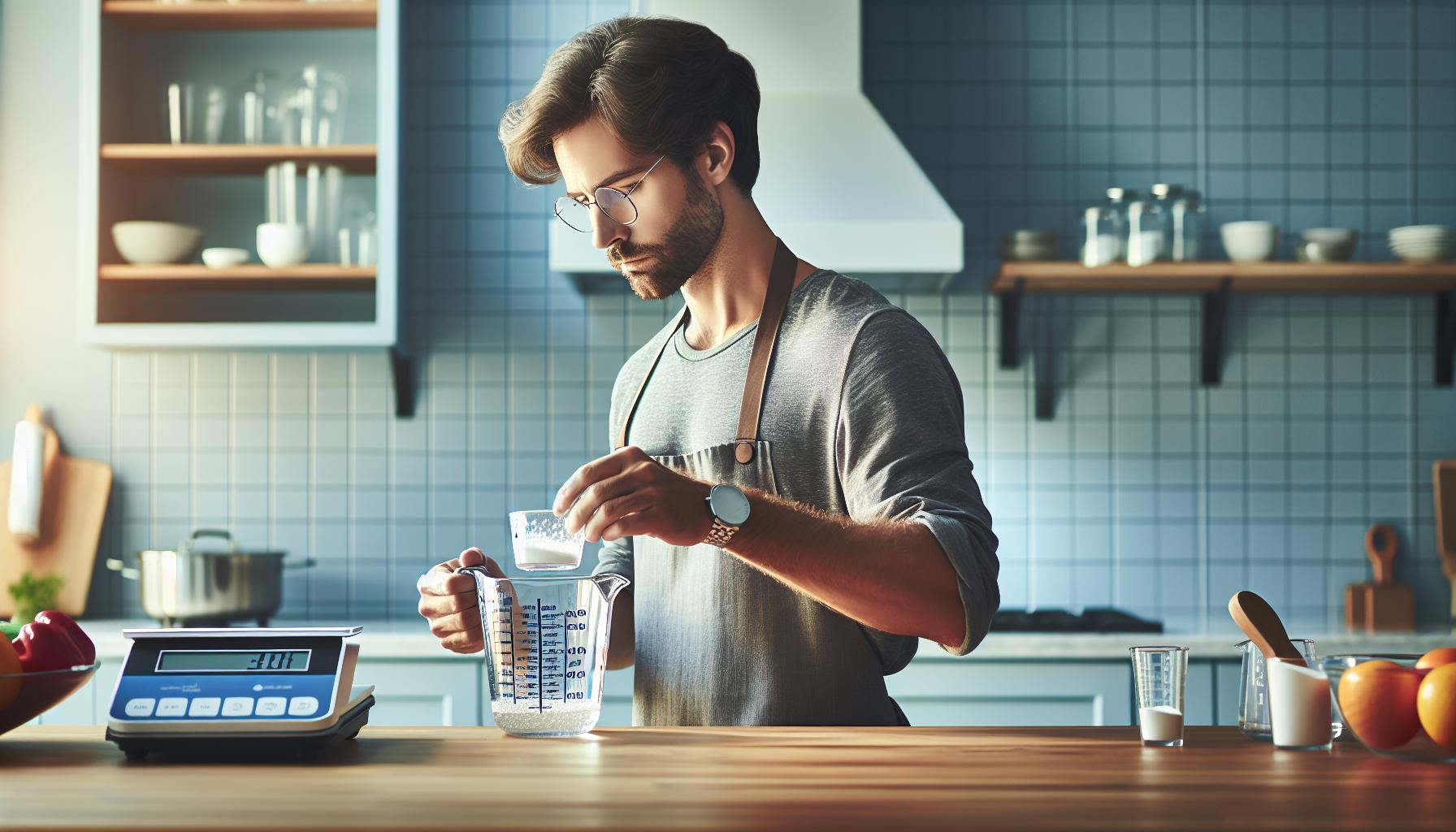Ever found yourself staring at a recipe that calls for 300 ml of an ingredient but only have measuring cups on hand? It can be frustrating when measurements don’t match the tools you’re using. Converting between milliliters and cups might seem tricky, but it’s actually pretty simple once you know the basics.
Understanding Milliliters And Cups
Milliliters and cups are two common units of volume measurement used in recipes worldwide. Knowing their definitions and variations helps simplify conversions.
What Are Milliliters?
Milliliters measure liquid volume in the metric system, denoted as “ml.” One liter equals 1,000 ml, making milliliters useful for smaller quantities. For example, a standard teaspoon holds approximately 5 ml.
What Are Cups And Their Variations?
Cups measure volume in the imperial and US customary systems, often used in cooking. In the US, one cup equals 236.588 ml. Variations include the UK cup (284 ml) and the metric cup (250 ml). For example, US measuring cups are standard for recipes in America, while Australian recipes usually rely on metric cups.
How Much Is 300 Ml In Cups?

Understanding how 300 ml translates to cups simplifies recipe preparation. Conversion depends on the measurement system used.
Conversion Basics
300 ml equals approximately 1.27 US cups. In recipes, rounding it to 1 1/4 cups often suffices for simplicity. This estimate stems from one US cup being 236.588 ml. Accurate conversions ensure consistency, particularly in baking.
- US Measurement System: 300 ml converts to roughly 1.27 cups.
- Metric System: 300 ml equals exactly 1.2 metric cups, as one metric cup measures 250 ml.
- UK System: 300 ml becomes about 1.06 UK cups (284 ml per UK cup).
These conversions vary slightly, so select the correct type of cup for precise results.
Why It’s Important To Know This Measurement

Understanding how 300 ml converts to cups simplifies tasks that involve precise measurements. It ensures accuracy in various scenarios where accuracy is essential.
Cooking And Baking Applications
Accurate measurements are essential in cooking and baking to achieve consistent results. For example, recipes often require specific liquid amounts like 300 ml, whether for cake batter or soup. Misjudging these conversions could lead to incorrect textures, flavors, or consistencies. Precise conversions, such as knowing 300 ml equals roughly 1 1/4 US cups, help replicate recipes as intended.
Everyday Situations
Knowing this conversion proves helpful in everyday activities involving liquid measurements. Examples include making beverages like smoothies or teas, preparing baby formula, or following do-it-yourself instructions for cleaning solutions. Since not everyone owns a milliliter measuring tool, understanding these values can save time and effort when only cups are available.
Tips For Accurate Measurements

Precise measurements are essential for achieving consistent results in cooking, baking, and other tasks. To ensure accuracy, follow these tips for using measuring tools and adjusting recipes effectively.
Using Measuring Tools
I rely on the right tools for precise measurements. For liquids like 300 ml, I prefer a liquid measuring cup with clear markings in both milliliters and cups. Placing the cup on a flat surface and checking measurements at eye level avoids errors caused by tilting. Digital kitchen scales are valuable for converting milliliters to grams or ounces, ensuring accuracy when recipes require weight-based measurements.
When standard US cups are my only option, I remember that each cup equals 236.588 ml. Using this conversion, I estimate as close as possible for non-liquid ingredients by compacting materials like sugar or flour properly in the cup.
Adjusting For Recipes
I adjust recipes carefully when converting between milliliters and cups to maintain intended textures and flavors. For wet ingredients, I measure exactly according to the ml-to-cup ratio, maintaining the integrity of the recipe. For dry ingredients, I level them off with a straight edge for uniformity, avoiding overpacking that could distort ratios.
If scaling up or down, I recalculate the original ml-to-cup conversion for each ingredient. For 300 ml in recipes calling for 1.25 cups, I replicate it proportionally, ensuring the final product remains consistent. Using substitution charts or conversion calculators helps make these adjustments with confidence.
Conclusion
Mastering the conversion of 300 ml to cups can make cooking and baking much smoother, especially when precision matters. Whether you’re working with US, metric, or UK measurements, knowing these equivalents saves time and ensures your recipes turn out as intended.
By using the right tools and techniques, you can confidently handle any recipe requiring this conversion. Understanding these basics not only improves your kitchen skills but also helps you tackle everyday tasks with ease.
Frequently Asked Questions
What does 300 ml equal in US cups?
300 ml is approximately equal to 1.27 US cups. For simplicity, this is often rounded to about 1 1/4 US cups.
How many metric cups are in 300 ml?
300 ml equals exactly 1.2 metric cups in the metric measurement system.
How many UK cups are in 300 ml?
300 ml is approximately 1.06 UK cups, which is slightly more than 1 cup in the UK system.
Why is accurate measurement important in recipes?
Accurate measurements ensure consistent results in cooking and baking. Misjudging conversions can affect the texture, flavor, or consistency of the final dish.
How can I measure 300 ml without a milliliter tool?
You can use a liquid measuring cup with both milliliters and cups marked. For US measures, use about 1 1/4 cups for 300 ml.
Is a US measuring cup the same as a metric or UK cup?
No, they’re different. A US cup equals 236.588 ml, a metric cup equals 250 ml, and a UK cup equals 284 ml.
What tools are best for measuring liquid like 300 ml?
A liquid measuring cup with milliliter and cup markings is ideal. Digital kitchen scales also work well for precise measurement and conversion.
How can I convert milliliters to cups easily?
To convert, use the general rule that 1 US cup equals about 236.588 ml. For example, divide milliliters by 236.588 to find the cup equivalent.
Can I use the same cups for dry and liquid ingredients?
It’s better to use dry measuring cups for dry ingredients and liquid measuring cups for liquids like 300 ml for improved accuracy.
What happens if I mismeasure 300 ml in a recipe?
Mismeasurement can lead to inconsistent results, affecting the texture, flavor, or balance of your dish. This is especially critical in baking.

